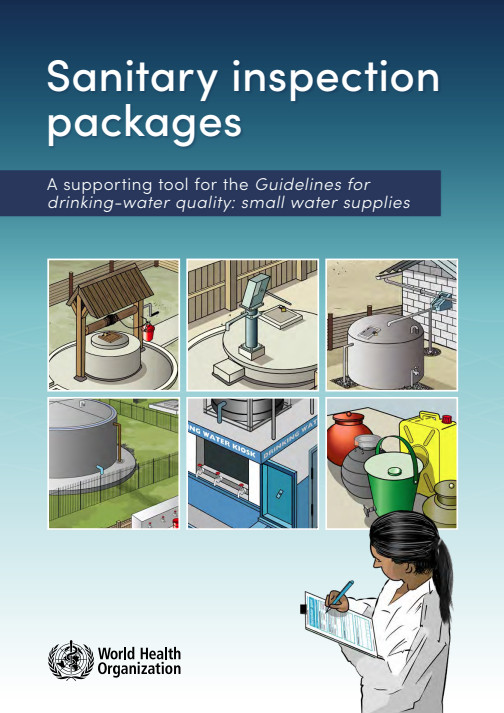Sanitary inspection packages - a supporting tool for the Guidelines for drinking-water quality: small water supplies
 |
Directives sur la qualité de l'eau de boisson : petits approvisionnements en eau
manuel Feb 2024 ; 226 pages
Ed. WHO - Genève
Téléchargeable sous format: PdF
Page de présentation d'un éditeur
 Guidelines for drinking-water quality: small water supplies
Abstract:
Guidelines for drinking-water quality: small water supplies
Abstract:A sanitary inspection is a simple, on-site evaluation (traditionally using a checklist) to help identify and support the management of priority risk factors that may lead to contamination of a drinking-water supply. Sanitary inspections are a well-established and widely-applied practice. They can support water safety planning, and in some contexts, may be a simplified alternative to water safety plans.
This publication presents the World Health Organization’s (WHO’s) sanitary inspection packages. These packages update the sanitary inspection forms in WHO’s 1997 Guidelines for drinking-water quality. Volume 3: surveillance and control of community supplies. With more than 25 years of practical experience with the application of sanitary inspections, these packages have been developed from a comprehensive evidence review and established good practices.
Each package includes a sanitary inspection form, supported by technical guidance and management advice to help ensure the ongoing safe management of small water supplies.
These new tools support proactive risk management and drinking-water quality surveillance across a broad range of water delivery scenarios, and can be applied by health authorities, surveillance agencies, water suppliers, and other stakeholders. As such, they are a valuable practical tool to help implement the recommendations in WHO’s 2024 Guidelines for drinking-water quality: small water supplies. Contents:
1 - Dug well with a hand pump
2 - Dug well with a windlass
3 - Spring
4 - Tubewell with a hand pump
5 - Borehole with a motorized pump
6 - Rainwater collection and storage
7 - Surface water source and intake
8 - Piped distribution: storage tank
9 - Piped distribution: network
13 - Household practices
10 - Piped distribution: tapstand
11 - Filling station and water cart
12 - Kiosk
13 - Household practices
Mot clef: |
Editeur/Diffuseur: |
|
WHO
-
World Health Organization - Genève - Suisse |
En cas de lien brisé, nous le mentionner à communication@pseau.org